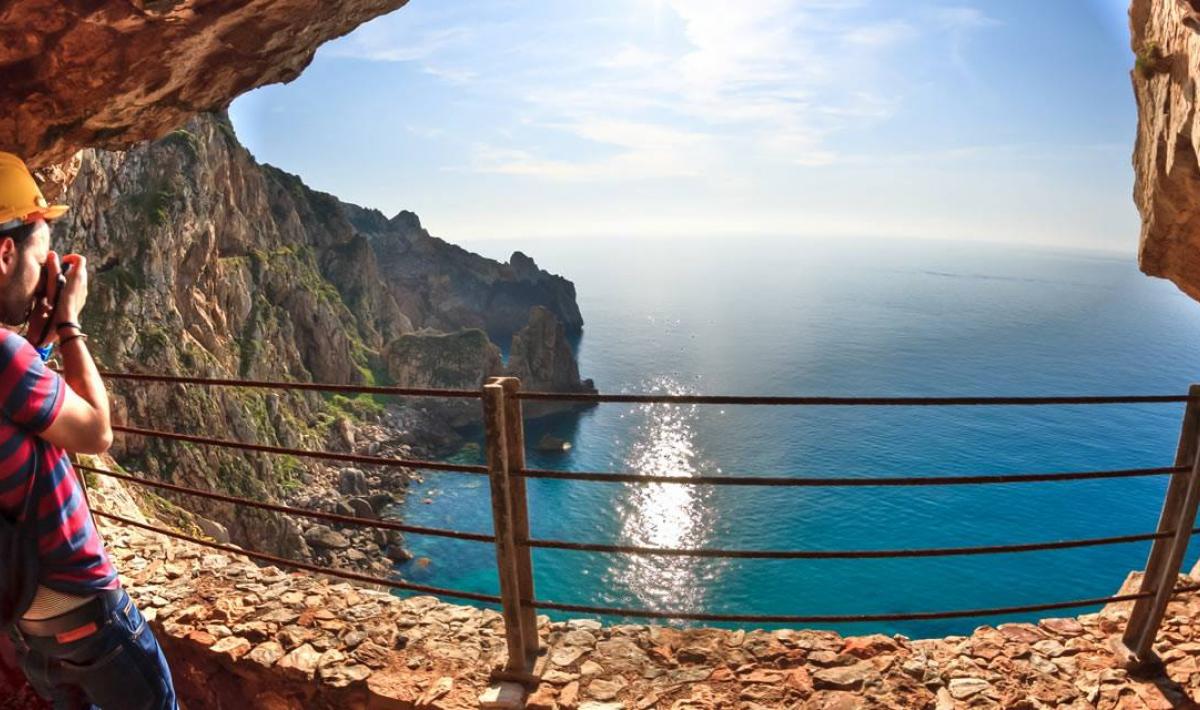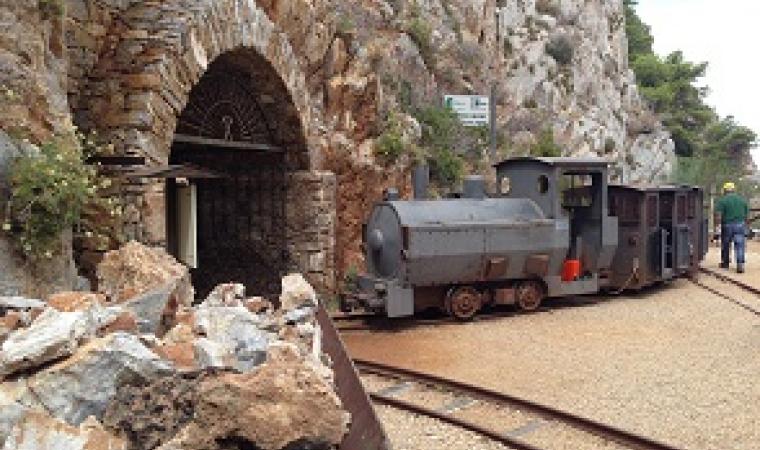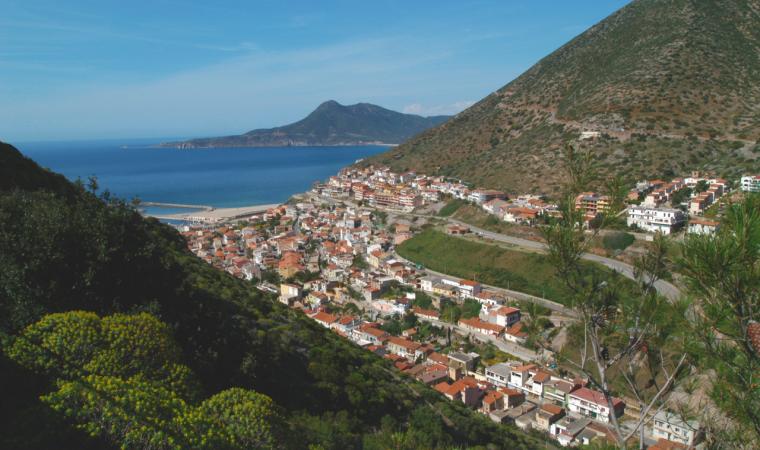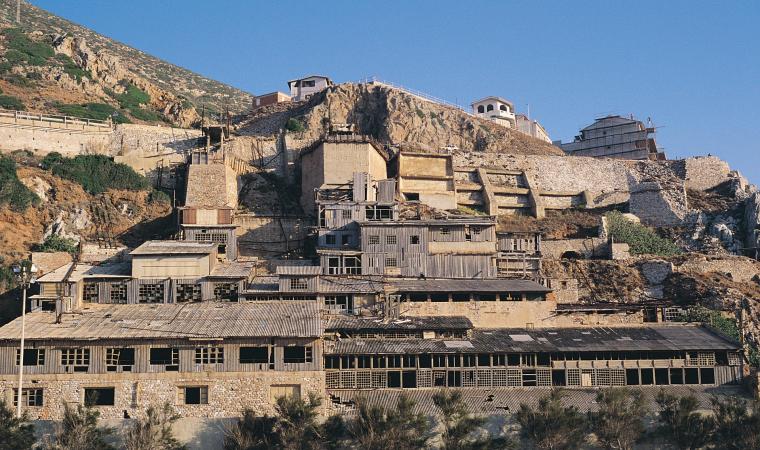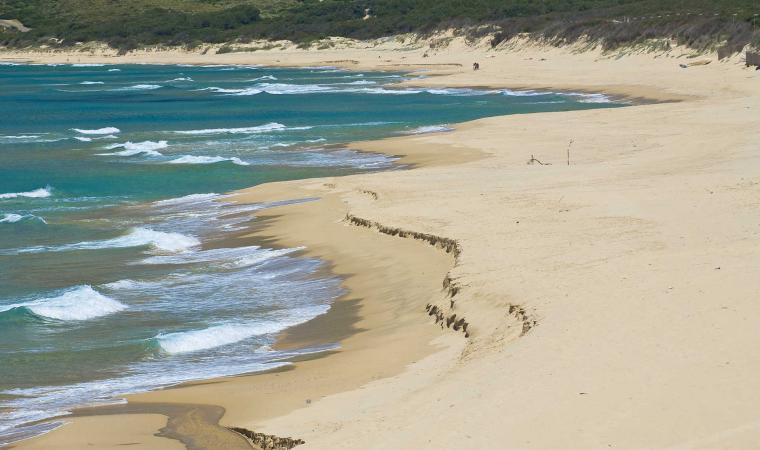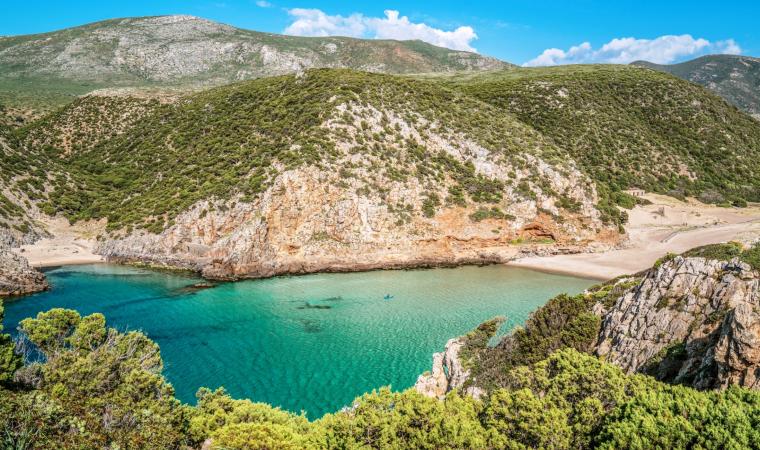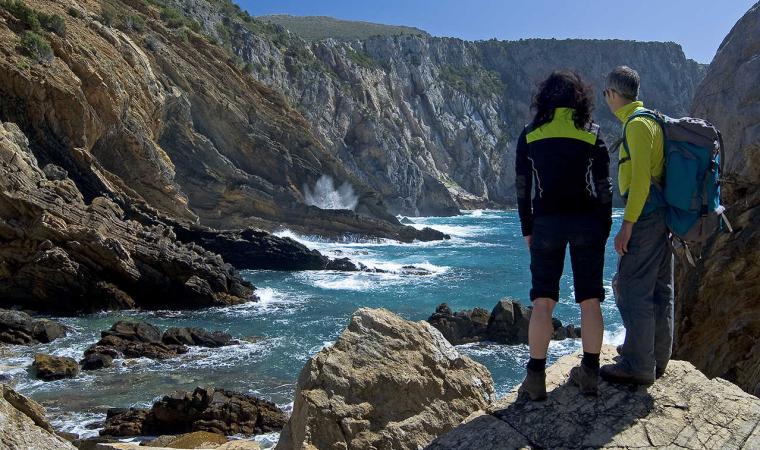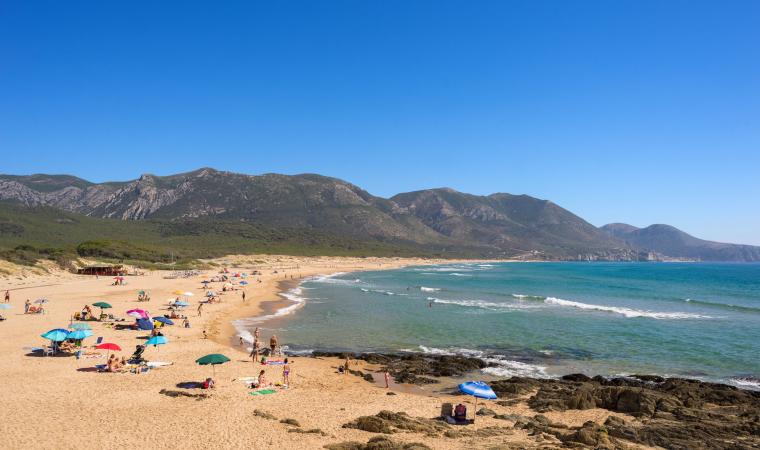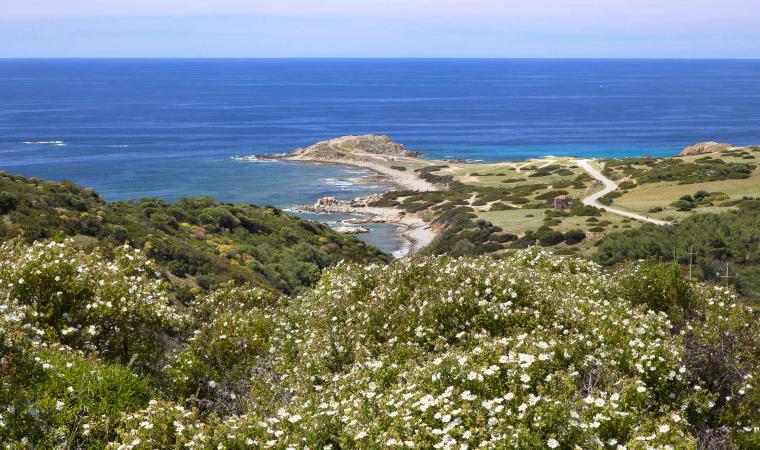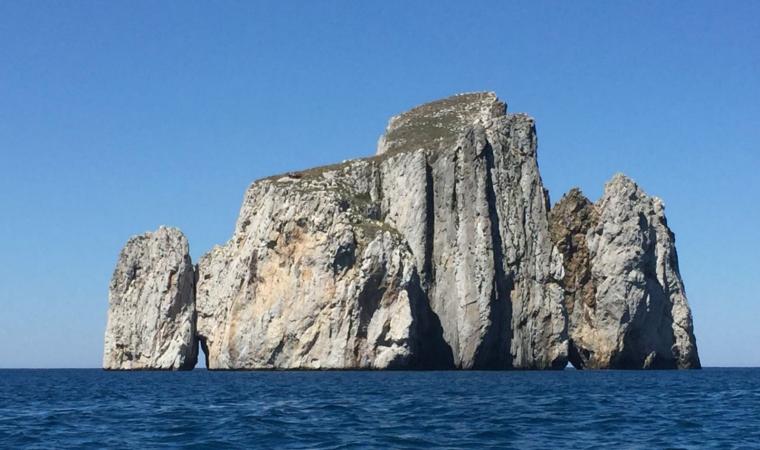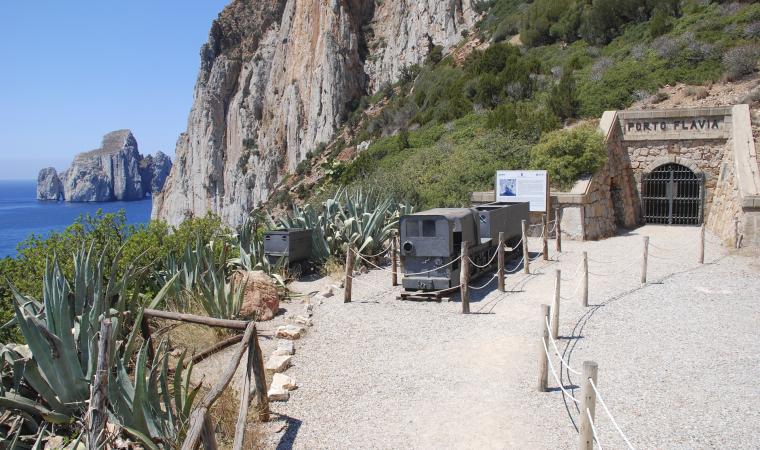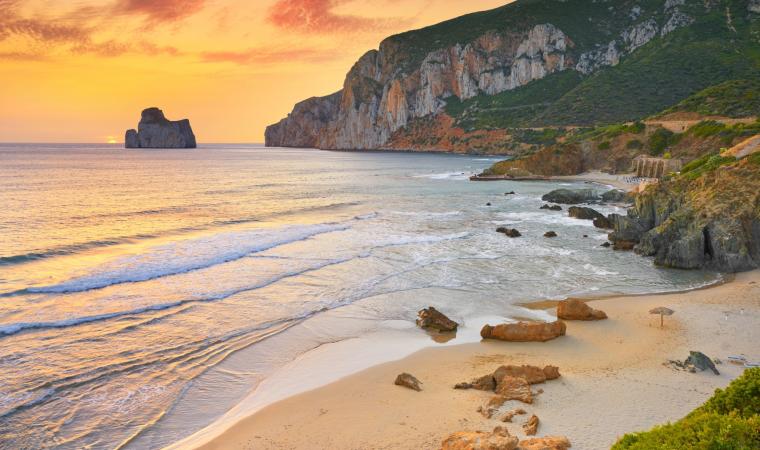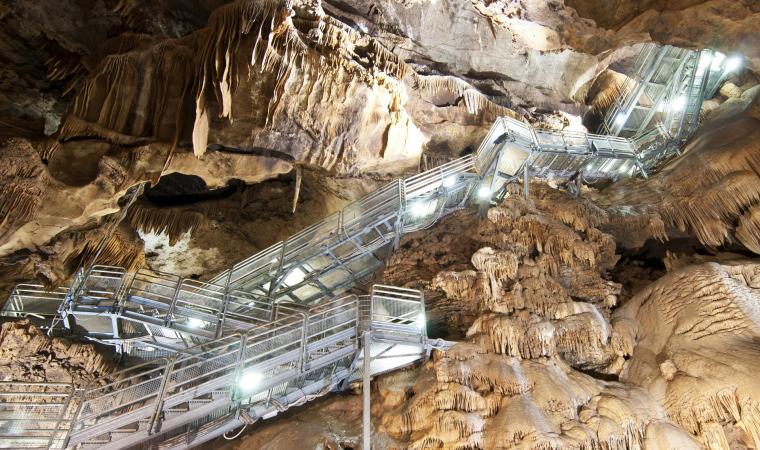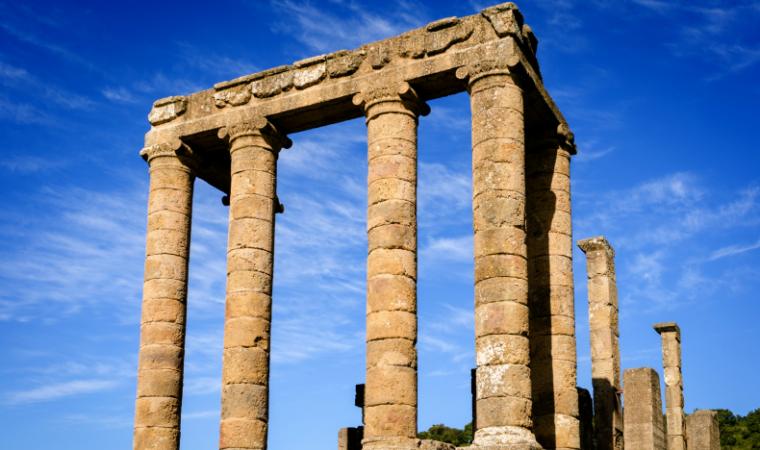A labyrinth of tunnels carved into the rock, opening spectacularly onto sheer views of the island's south-west coast. The tour of the Henry tunnel, which has been made safe and can be visited with prior booking, is a journey through time inside the Pranu Sartu mine, Buggerru's most famous and productive mine. On the way out, you can take an electric train along the route of the old steam railway, and on the way back you can walk along the old 'pedestrian' tunnel, which was once used by pack mules. Walkways carved into the rock run the length of the cliff: some sections are in the dark, broken every now and then by the light coming from huge windows carved into the mountain face and overlooking the sea. The most spectacular view is at the end of the route: 50 metres above sea level, with a breathtaking backdrop overlooking the coast and the village's houses.
Excavation of the tunnel took place during the last three decades of the 19th century. For the time, this was a futuristic piece of engineering, as was the Porto Flavia tunnel. The remarkable size of the Henry - named after the French manager of the Anonime des Mines de Malfidano company, the concessionaire behind its exploitation, who decreed its construction - is due to the use, from the end of the 19th century, of a steam locomotive that ran through it and allowed the transport of raw minerals from the underground sites to the washeries and then to the port, where the cleaned minerals were loaded onto boats. Rail transport, on which the wagons of the coal-powered train ran, quickly replaced slow and costly transport on pack mules and was a huge step forward in the plant's productivity. At the time of the innovation, mining had been going on for thirty years, in 1865, with the transfer of the concessions to Anonime de Malfidano.
The exploitation of the site between the end of the 19th century and the first half of the 20th century transformed a small village of farmers and fishermen into one of the main centres of the mining epic. The industrial 'revolution' was more sudden and abrupt than in other sites in Sulcis-Iglesiente. Today, thanks in part to the restoration of its industrial archaeology, Buggerru is one of the eight sites that make up Sardinia's UNESCO-recognised geo-mineral park, as well as an attractive resort boasting enchanting coastal landscapes, including the inimitable Cala Domestica and the beautiful town beach.
The tour of the 'Henry' is embellished by stories about mining life. The mines were places of suffering, where workers' solidarity and class consciousness flourished. In particular, Pranu Sartu is the symbol of the workers' struggle, the scene of the famous massacre at Buggerru in 1904.
The miners, exploited to the limit, 'dared' to stage a historic strike, the first in Italy's industrial history. In response, the mining company called in the army. The soldiers responded to the miners' stone pelting by opening fire: three workers died and eleven others were wounded. This episode led to other strikes throughout Italy. The trigger for the tragic uprising was the change in summer working hours, but the discontent was much deeper. Exploitation by French and Belgian bosses at the end of the 19th and beginning of the 20th century was ruthless: gruelling shifts, no rest, the lowest wages in Europe, child labour, even having to pay for work tools, overtime to survive. As you enter the tunnel, you will notice a respectful silence, broken by the clanking of the wagons: in the dark and cold, you can imagine the atrocious things experienced by men of yesteryear who, with hard work and suffering, enabled their families to live a barely decent life.

